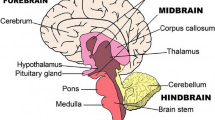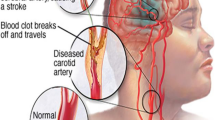Abstract
Stroke is one of the instantaneously shocking and spiking cerebrovascular diseases having substantial residual effects. Image analysis techniques have the ability to diagnosing and providing proper treatment for stroke patients. To lighten the problem, various techniques of image analysis have been proposed. Thus, this survey intended to analyze these proposed image analysis approaches intending to thoroughly examine the state-of-the-art image analysis techniques. To prepare this survey, the systematic literature review method was employed. Based on the reviewed literature, several clinical and biological image datasets are found to be used in the process of stroke diagnosis. However, there are very few publicly accessible datasets are available currently. In this survey, each image analysis technique used for stroke image analysis processes is briefly discussed. Finally, open research challenges are identified that could be addressed in the future.
Access this chapter
Tax calculation will be finalised at checkout
Purchases are for personal use only
Similar content being viewed by others
References
Songhee, C., Jungyoon, K., Jihye, L.: The use of deep learning to predict stroke patient mortality. Int. J. Environ. Res. Public Health 16(11), 1876 (2019). https://doi.org/10.3390/ijerph16111876
Namale, G., Kinengyere, A., Ddumba, E., Seeley, J., Newton, R.: Risk factors for haemorrhagic & ischemic stroke in Sub-Saharan Africa. J. Trop. Med. 18, 1–11 (2018). https://doi.org/10.1155/2018/4650851
Gebremariam, S.A., Yang, H.S.: Types, risk profiles, and outcomes of stroke patients in tertiary teaching hospital in northern Ethiopia. eNeurologicalSci 3(1), 41–47 (2016)
Ralph, L.S., Kasner, E.S.: An updated definition of stroke for the 21st century: a statement for healthcare professionals from American Stroke Association. Stroke 44, 2064–2089 (2013). https://doi.org/10.1161/STR.0b013e318296aeca
Kitchenham, B.: Procedures for Performing Systematic Reviews. Emp. Soft. Eng. Nat. ICT, Australia, NICTA Technical Report 0400011T.1 (2004)
Stephan, P., Jochen, B., Fiebach, D.: Acute stroke MRI: current status & future perspective. Neuroradiology 52, 189–201 (2010)
Chalela, A.J., et al.: MRI and CT in emergency assessment of patients with suspected-acute stroke: a prospective comparison. HHS Public Access 369(9558), 293–298 (2007). https://doi.org/10.1016/S0140-6736(07)60151-2
Napel, S.: Principles and techniques of 3D spiral CT angiography, pp. 167–82. Raven, New York (2005)
Dora, K., Nikoleta, I.: Modern imaging modalities in the assessment of acute stroke. Folia Med. 56(2), 81–87 (2014)
Mokli, Y., Pfaff, J., dos Santos, D., Herweh, C., Nagel, S.: Computer-aided imaging analysis in acute ischemic stroke – background and clinical applications. Neurol. Res. Pract. 1(1) (2019). https://doi.org/10.1186/s42466-019-0028-y
Cenek, M., Hu, M., York, G., Dahl, S.: Survey of image processing techniques for brain pathology diagnosis: challenges & opportunities. Front. Robot. AI 5 (2018). https://doi.org/10.3389/frobt.2018.00120
Soni, N., Dhanota, D., Kumar, S., Jaiswal, A., Srivastava, A.: Perfusion MR imaging of enhancing brain tumors: comparison of arterial spin labeling technique with dynamic susceptibility contrast technique. Neurol. India 65(5), 1046 (2017). https://doi.org/10.4103/neuroindia.ni_871_16
Prats-Montalban, J., de Juan, A., Ferrer, A.: Multivariate image analysis: a review with applications. Chemometr. Intell. Lab. 107, 1–23 (2011)
Anjna, E., Rajandeep, K.: Review of image segmentation technique. Int. J. Adv. Res. Comput. Sci. 8, 36–39 (2017)
Dilpreet, K., Yadwinder, K.: Various image segmentation techniques: a review. Int. J. Comput. Sci. Mobile Comput. 3(5), 809–814 (2014)
Vairaprakash, G., Subbu, K.: Review on image segmentation techniques. Int. J. Sci. Mod. Eng. 1(8), 1–8 (2014)
Whited, B., Rossignac, J., Slabaugh, G., Fang, T., Unal, G.: Pearling: stroke segmentation with crusted pearl strings. Pattern Recognit. Image Anal. 19(2), 277–283 (2009). https://doi.org/10.1134/s1054661809020102
Abdulrahman, A.: Segmentation of brain stroke image. Int. J. Adv. Res. Comput. Commun. Eng. 4, 375–378 (2015)
Homiera, K.: Feature selection from brain stroke CT images based on particle swarm optimization. Int. J. Adv. Stud. Comput. Sci. Eng. 5(1), 8–13 (2016)
Jayaram, P.V., Menaka, R.: An experimental study of Stockwell transform-based feature extraction method for ischemic stroke detection. Int. J. Biomed. Eng. Technol. 21(1), 40–48 (2016)
Marbun, J.T., Seniman, U., Andayani, J.T.: Classification of stroke disease using convolutional neural network. J. Phys. Conf. Ser. 978, 012092 (2018). https://doi.org/10.1088/1742-6596/978/1/012092
Mayank, C., Saurabh, S., Kishore, L.: A method for automatic-detection and classification of stroke from brain CT-images. In: 31st Annual International Conference of the IEEEEMBS Minneapolis, Minnesota, USA, September 2–6 (2009)
Saad, N.M., Abdullah, A.R., Muda, A.F., Musa, H.: Segmentation and classification analysis techniques for stroke based on diffusion weighted images. Int. J. Comput. Sci. 3(14), 1–8 (2018)
Lindenberg, R., Zhu, L., Rüber, T., Schlaug, G.: Predicting functional motor potential in chronic stroke patients using diffusion tensor imaging. Hum. Brain Mapp. 33(5), 1040–1051 (2011). https://doi.org/10.1002/hbm.21266
Heiss, W., Kidwell, C.: Imaging for prediction of functional outcome and assessment of recovery in ischemic stroke. Stroke 45(4), 1195–1201 (2014). https://doi.org/10.1161/strokeaha.113.003611
Pinto, A., Mckinley, R., Alves, V., Wiest, R., Silva, C., Reyes, M.: Stroke lesion-outcome prediction based on MRI combined with clinical information. Front. Neurol. 9 (2018). https://doi.org/10.3389/fneur.2018.01060
Rekik, I., Allassonniere, S., Carpenter, T., Wardlaw, J.: Medical image analysis methods in MR/CT imaged acute-subacute ischemic stroke lesion: segmentation, prediction and insights into dynamic evolution simulation models a critical appraisal. Neuro Image Clin. 1(1), 164–178 (2012). https://doi.org/10.1016/j.nicl.2012.10.003
Subudhi, A., Dash, M., Sabut, S.: Automated segmentation and classification of brain stroke using expectation-maximization and random forest classifier. Biocybern. Biomed. Eng. 40(1), 277–289 (2020). https://doi.org/10.1016/j.bbe.2019.04.004
Lemogoum, D., Degaute, J., Bovet, P.: Stroke – prevention, treatment, and rehabilitation in Sub-Saharan Africa. Am. J. Prev. Med. 29(5), 95–101 (2005). https://doi.org/10.1016/j.amepre.2005.07.025
Government of Western Australia. Diagnostic Imaging Pathways – Stroke (2nd ed.). http://www.imagingpathways.health.wa.gov.au (2017)
Audebert, H.J., Fiebach, J.B.: Brain imaging in acute ischemic stroke—MRI or CT? Curr. Neurol. Neurosci. Rep. 15(3), 1–6 (2015). https://doi.org/10.1007/s11910-015-0526-4
Lee, E., Kim, Y., Kim, N., Kang, D.: Deep into the brain: artificial intelligence in stroke imaging. J. Stroke 19(3), 277–285 (2017). https://doi.org/10.5853/jos.2017.02054
Brazzelli, M.: Magnetic resonance imaging versus computed tomography for detection of acute vascular-lesions in patients presenting with stroke symptoms (Review). Cochrane Database Syst. Rev. 4(4) (2009). Available: https://pubmed.ncbi.nlm.nih.gov/19821415/
Carlos, M.: Deep learning IoT system for online stroke detection in skull-computed tomography images. J. Comput. Netw. 152(19), 25–39 (2019). https://doi.org/10.1016/j.comnet.2019.01.019
Celine, R.: Automated delineation of stroke lesions using brain CT images. Neuro Image Clin. 4(14), 540–548 (2014). https://doi.org/10.1016/j.nicl.2014.03.009
Robert, L., Lin, L., Gottfried, S.: Predicting functional motor potential in chronic stroke patients using diffusion tensor imaging. Hum. Brain Mapp. 33(1), 1040–1051 (2011). https://doi.org/10.1002/hbm.21266
Soni, N., Dhanota, D.P., Kumar, S., Jaiswal, A.K., Srivastava, A.K.: Perfusion MR-imaging of enhancing brain tumors: comparison of arterial spin labeling technique with dynamic susceptibility contrast technique. Neurol. India 65, 1046–1052 (2017). https://doi.org/10.4103/neuroindia.ni_871_16
Harston, W.J., Minks, D., Sheerin, F., Payne, S.J., Chappell, M., Kennedy, J.: Optimizing image registration and infarct definition in stroke research. Ann. Clin. Transl. Neurol. 4(3), 166–174 (2017)
Doyle, S., Forbes, F., Jaillard, A., Heck, O., Detante, O., Dojat, M.: Sub-acute and chronic ischemic stroke lesion MRI segmentation. In: Crimi, A., Bakas, S., Kuijf, H., Menze, B., Reyes, M. (eds.) BrainLes 2017. LNCS, vol. 10670, pp. 111–122. Springer, Cham (2018). https://doi.org/10.1007/978-3-319-75238-9_10
Sporns, P., et al.: Computed tomography perfusion improves diagnostic accuracy in acute posterior circulation stroke. Cerebrovasc. Dis. 41(5–6), 242–247 (2016). https://doi.org/10.1159/000443618
Bastian, C., et al.: Influence of stroke infarct location on functional outcome measured by the modified Rankin scale. Stroke 45, 1695–1702 (2014). https://doi.org/10.1161/STROKEAHA.114.005152
Liew, S., et al.: A large, open source dataset of stroke anatomical brain images and manual lesion segmentations. Sci. Data 5, 180011 (2018). https://doi.org/10.1038/sdata.2018.11
Maier, O., Menze, B.H., Heinrich, P., Handles, H., Reyes, M.: ISLES 2015: a public evaluation benchmark for ischemic stroke lesion-segmentation from multispectral MRI. Med. Image Anal. 35, 250–269 (2017). https://doi.org/10.1016/j.media.2016.07.009
Kidwell, C.S., Chalela, J.A., Saver, J.L.: Comparison of MRI and CT to detecting the acute intracerebral haemorrhage. JAMA 292(15), 1823–1830 (2004)
Wardlaw, J.M., Keir, S.L., Seymour, J.: What is the best imaging strategy for acute stroke? Health Technol. Assess. 8, 1–180 (2004)
Latchaw, R.E., Yonas, H., Hunter, G.J.: Guidelines and recommendations for perfusion-imaging in cerebral-ischemia: a scientific statement for healthcare professionals by the writing group on perfusion-imaging, from the Council on Cardiovascular Radiology of the American Heart Association. Stroke 34, 1084–1104 (2005)
Adams, H.P., Adams, R.J., Brott, T.: The early management guidelines for patients with ischemic stroke. Stroke 34, 1056–1083 (2005)
Madhu, L.: Prediction of stroke using deep learning model. Am. J. Neuroradiol. 3(8), 1–9 (2017). https://doi.org/10.1007/978-3-319-70139-478
Steffanie, H., Benno, G., Corinne, B., Gemma, L., Marcoand, D., Arthur, L.: Automated morphologic analysis of microglia after stroke. Front. Cell. Neurol. 12(106), 1–11 (2018). https://doi.org/10.3389/fncel.2018.00106
Arko, B.: Determining ischemic stroke from CTA imaging using symmetry sensitive convolutional networks. Researchgate, pp. 1–6 (2019). https://doi.org/10.1109/ISBI.2019.8759475
Jakub, N., Michal, M., Michal, K.: Data augmentation for brain-tumor segmentation: a review. Front. Comput. Neurosci. 13(83), 1–18 (2019)
Forkert, N.D., Verleger, T., Cheng, B., Thomalla, G., Hilgetag, C.C., Fiehler, J.: Multiclass support vector machine-based lesion mapping predicts functional outcome in ischemic stroke patients. PLoS One 10(6), e0129569 (2015). https://doi.org/10.1371/journal.pone.0129569
Li, X., Bian, D., Jinghui, Y., Li, M., Zhao, D.: Using machine learning models to improve stroke risk level classification methods of China national stroke screening. BMC Med. Inform. Decis. Mak. 19(261), 1–7 (2019)
Abulnaga, S., Rubin, J.: Ischemic Stroke Lesion Segmentation in CT Perfusion Scans Using Pyramid Pooling and Focal Loss. arXiv:1811.01085v1 [cs.CV] (2018)
Dolz, J., Ben, I., Desrosiers, C.: Dense Multi Path U-Net for Ischemic Stroke Lesion Segmentation in Multiple Image Modalities. arXiv:1810.07003v1 [cs.CV] (2018)
Sharique, M., Pundarikaksha, B., Sridar, P., Rama, K., Ramarathnam, K.: Parallel CapsuleNet for Ischemic Stroke Segmentation (2019). https://doi.org/10.1101/661132
Öman, O., Mäkelä, T., Salli, E., Savolainen, S., Kangasniemi, M.: 3D convolutional neural networks applied to CT angiography in the detection of acute ischemic stroke. Eur. Radiol. Exp. 3(1), 1–11 (2019). https://doi.org/10.1186/s41747-019-0085-6
Wang, G., Song, T., Dong, Q., Cui, M., Huang, N., Zhang, S.: Automatic Ischemic Stroke Lesion Segmentation from Computed Tomography Perfusion Images by Image Synthesis and Attention Based Deep Neural Networks. arXiv:2007.03294v1 [eess.IV] (2020)
Samak, A., Clatworthy, P., Mirmehdi, M.: Prediction of Thrombectomy Functional Outcomes using Multimodal Data. arXiv:2005.13061v2 [eess.IV] (2020)
Rubin, J., Abulnaga, S.: CT-To-MR Conditional Generative Adversarial Networks for Ischemic Stroke Lesion Segmentation. arXiv:1904.13281v1 [eess.IV] (2019)
Malla, P., Hernandez, C., Rachmadi, M., Komura, T.: Evaluation of enhanced learning techniques for segmenting ischemic stroke lesions in brain MRP images using a convolutional neural network scheme. Frontiers (2019). https://doi.org/10.1101/544858
Zhang, L., et al.: Ischemic-stroke-lesion segmentation using multi-plane information fusion. IEEE Access 8, 45715–45725 (2020). https://doi.org/10.1109/ACCESS.2020.2977415
Zhao, B., et al.: Automatic Acute Ischemic Stroke Lesion Segmentation Using Semi-Supervised Learning
Suberi, M., Zakaria, W., Tomari, R., Nazari, A., Mohd, H., Fuad, N.: Deep transfer learning application for automated ischemic classification in posterior fossa CT images. Int. J. Adv. Comput. Sci. Appl. 10(8), 459–465 (2019)
Liu, Z., Cao, C., Ding, S., Han, T., Wu, H., Liu, S.: Towards Clinical Diagnosis: Automated Stroke Lesion Segmentation on Multimodal MR Image Using Convolutional Neural Network. arXiv:1803.05848v1 [cs.CV] (2018)
Henok, Y.A.: Adaptive learning expert system for diagnosis and management of viral hepatitis. Int. J. Artif. Intell. Appl. 10(2), 33–46 (2019). https://doi.org/10.5121/ijaia.2019.10204
Stroke Diagnosis. https://www.nhs.uk/conditions/stroke/diagnosis/. Retrieved 19 May 2020
Great Learning Team: Introduction to Image Pre-processing: What is Image Pre-processing? https://www.mygreatlearning.com/blog/author/greatlearning/ (2020)
Author information
Authors and Affiliations
Corresponding author
Editor information
Editors and Affiliations
Rights and permissions
Copyright information
© 2022 ICST Institute for Computer Sciences, Social Informatics and Telecommunications Engineering
About this paper
Cite this paper
Agizew, H.Y., Beyene, A.M. (2022). A Survey of Stroke Image Analysis Techniques. In: Berihun, M.L. (eds) Advances of Science and Technology. ICAST 2021. Lecture Notes of the Institute for Computer Sciences, Social Informatics and Telecommunications Engineering, vol 411. Springer, Cham. https://doi.org/10.1007/978-3-030-93709-6_30
Download citation
DOI: https://doi.org/10.1007/978-3-030-93709-6_30
Published:
Publisher Name: Springer, Cham
Print ISBN: 978-3-030-93708-9
Online ISBN: 978-3-030-93709-6
eBook Packages: Computer ScienceComputer Science (R0)




